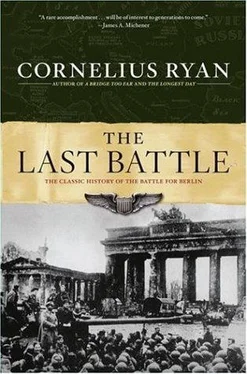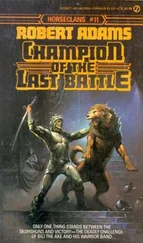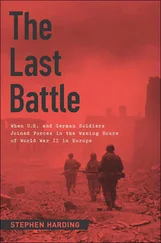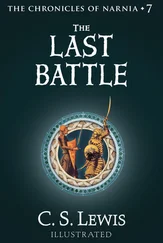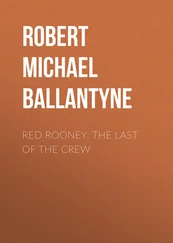This incident comes from a private conversation with Mrs. Rosenberg (now Mrs. Paul Hoffman). Mrs. Roosevelt was also present; the two women later compared notes and agreed on the President’s exact words.
In 1948, following a sudden rise in pulse rate, his doctors told him to give up tobacco. Eisenhower never smoked again.
His pride was somewhat restored when, shortly after this incident, the British showed their confidence in Montgomery and his policies by naming him a Field Marshal. For the man who had turned the tide of British defeat in the desert and chased Rommel out of North Africa, it was an honor long overdue.
These figures were given by Winston Churchill on Jaunary 18, 1945, in a speech before the House of Commons. Appalled by the breakdown in amity, he announced that “U.S. troops have done almost all the fighting” in the Ardennes, suffering losses “equal to those of both sides at the Battle or Gettysburg.” Then, in what could only be interpreted as a direct slap at Montgomery and his supporters, he warned the British not to “lend themselves to the shouting of mischief makers.”
“I should never have held the press conference at all,” Montgomery told the author in 1963. “The Americans seemed over-sensitive at the time and many of their generals disliked me so much that no matter what I said, it would have been wrong.”
These figures were given by Winston Churchill on Jaunary 18, 1945, in a speech before the House of Commons. Appalled by the breakdown in amity, he announced that “U.S. troops have done almost all the fighting” in the Ardennes, suffering losses “equal to those of both sides at the Battle or Gettysburg.” Then, in what could only be interpreted as a direct slap at Montgomery and his supporters, he warned the British not to “lend themselves to the shouting of mischief makers.”
On March 11, for example, SHAEF intelligence reported that Zhukov’s “spearheads” had reached Seelow, west of the Oder and just twenty-eight miles from Berlin. When the author interviewed Soviet defense officials in Moscow in 1963, he learned that Zhukov did not actually reach Seelow, in the center of the German Oder defense system, until April 17.
Whoever prepared the counterintelligence paper was in error about Barbarossa’s last resting place. Barbarossa (Red Beard)—the surname of Frederick I (1121–1190)—is not buried in Berchtesgaden. As the myth goes, “he never died, but merely sleeps” in the hills of Thuringia. He sits at a “stone table with his six knights waiting for the fullness of time when he will rescue Germany from bondage and give her the foremost place in the world… his beard has already grown through the stone slab, but must wind itself thrice around the table before his second advent.”
One of Marshall’s senior staff officers, General John Hull, who in 1945 was the U.S. Army’s Acting Chief of Staff for Operations, says that “Ike was Marshall’s protégé and, though Ike might resent me saying this, there was between the two men a sort of father-son relationship.”
There are many versions of the row, ranging from a detailed report in Juergen Thorwald’s Flight in the Winter to a two-line account in Die Leitzen Tage der Reichskanzlei by Gerhard Boldt, one of Guderian’s aides. Passing lightly over the matter, Boldt writes that Hitler advised the OKH Chief “to go to a spa for treatment” and Guderian “took the hint.” He gives the conference date as March 20, seven days before the fateful Küstrin attack. Guderian, in his memoirs Panzer Leader , gives the time and date as precisely 14.00 hours on March 28. For the most part, my reconstruction is based on Guderian’s memoirs, supplemented by interviews with Heinrici, Busse and their respective staffs.
Churchill had shown this Russian note to Eisenhower on March 24 and the Supreme Commander, he later wrote, “seemed deeply stirred with anger at what he considered most unjust and unfounded charges about our good faith.”
Eisenhower’s 1,000-word cable does not appear in the official histories, and the version in his own Crusade in Europe has been cut and edited. For example, the phrase “always shouted to me” has been changed to “always emphasized,” while the angry last paragraph cited above has been dropped altogether. Ironically, the cable was originally drafted by a Britisher, SHAEF’s Deputy Operations Chief, Major General John Whiteley, but by the time it left headquarters it bore Eisenhower’s clear imprint.
In a long and detailed taped interview with the author.
Russian quotes not otherwise attributed, like other Soviet material used throughout the book, were obtained during a research trip to Moscow, in April, 1963. The Soviet Government allowed the author, assisted by Professor John Erickson of the University of Manchester, to interview participants—from marshals to privates—in the battle for Berlin (for a full list of names, see the appendix). The only Soviet marshal the author was prohibited from interviewing was Zhukov. The others—Koniev, Sokolovskii, Rokossovskii and Chuikov—each contributed an average of three hours of private conversations. In addition, the author was given access to military archives and allowed to copy and take out of Russia voluminous documentation, including battle maps, after-action reports, monographs, photographs and military histories hitherto circulated only within Soviet government circles.
As, of course, they were.
Stalin’s crucial conference with his marshals is well known to the upper echelon of the Soviet military, although it has never before been published in the West. A number of versions have appeared in Russian military histories and journals. One such is Zhukov’s account of the meeting to his staff officers, as recorded by the Russian historian, Lieutenant General N. N. Popiel. Marshal Koniev explained the background of the conference to the author and supplied details hitherto unknown. He also recounts part of the details in the first part of his memoirs, published in Moscow in 1965. There are some differences, between his version and Zhukov’s. For example, Zhukov did not mention Montgomery’s drive on Berlin; Koniev makes no reference to a proposed Anglo-American airborne drop on the city.
The source material for the report read by General Shtemenko has never been revealed. In the author’s judgment it was a grossly exaggerated military evaluation of Eisenhower’s message of the night before—an evaluation based partly on suspicion of Eisenhower’s motives, partly as a concoction intended to furnish a rationale for Stalin’s own aims.
Contrary to generally accepted belief, the deterioration of Hitler’s health was not the result of injuries sustained during the attempted bomb plot on his life in 1944, though it seems to have marked the beginning of a rapid debilitation. After the war, U.S. counterintelligence teams interrogated nearly every doctor who had attended Hitler. The author has read all their reports and, while none of them give a specific cause for Hitler’s palsied condition, the general opinion is that, in origin, it was partly psychogenic, and partly caused by the manner in which he lived. Hitler hardly ever slept; night and day had little distinction for him. In addition, there is abundant evidence that he was slowly being poisoned by the indiscriminate use of drugs administered to him in massive injections by his favorite physician, Professor Theodor Morell. These ranged from prescriptions containing morphia, arsenic and strychnine to various artificial stimulants and mysterious “miracle drugs” which the doctor himself compounded.
Читать дальше
